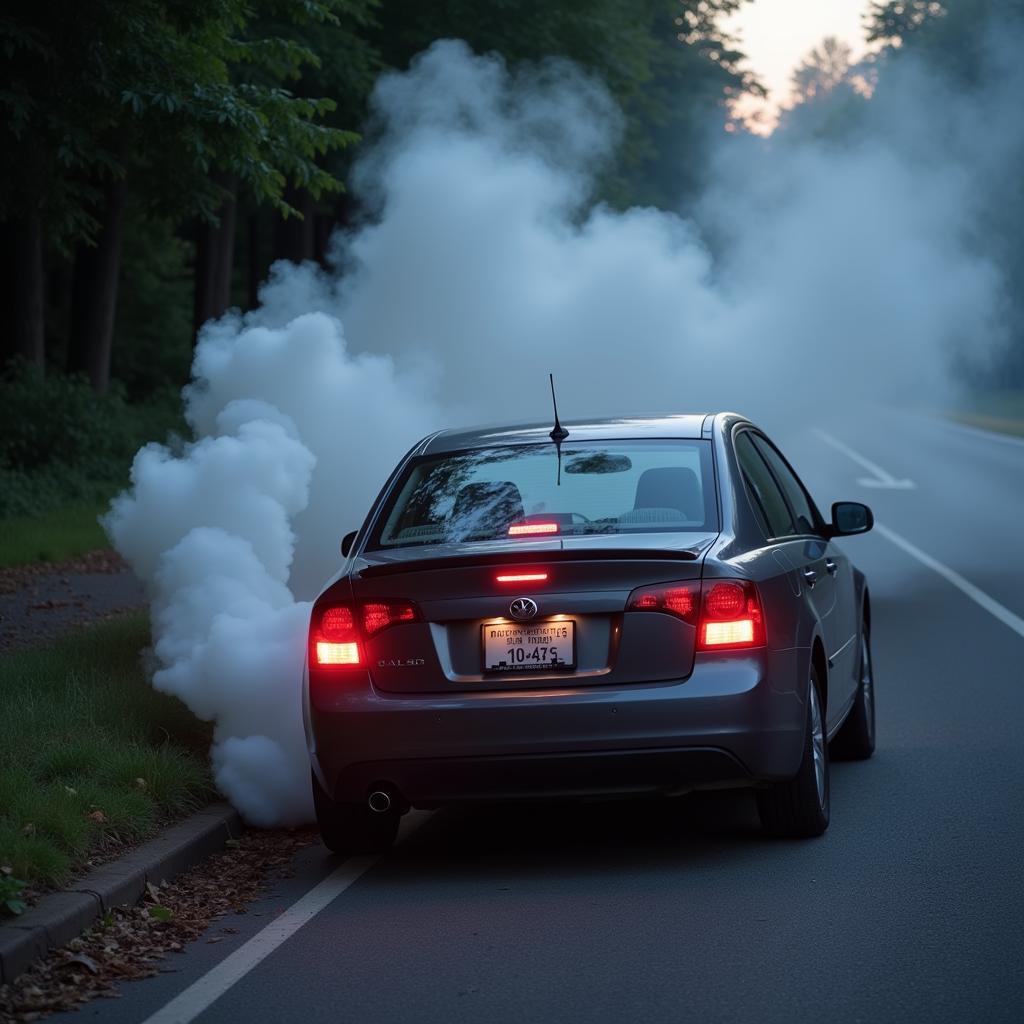Can You Drive A Car With A Catalytic Converter Problem? Yes, but it’s not recommended. Driving with a faulty catalytic converter can lead to further damage and even put you at risk. This article will explore the implications of driving with a bad catalytic converter, the symptoms to watch out for, and the steps you should take to address the issue.
 Driving with a Bad Catalytic Converter: Risks and Consequences
Driving with a Bad Catalytic Converter: Risks and Consequences
Driving with a malfunctioning catalytic converter can cause a range of issues, from reduced engine performance to significant environmental damage. Ignoring the problem can lead to costly repairs down the line and even create safety hazards. So, understanding the signs and taking swift action is crucial. What are the tell-tale signs of a catalytic converter issue? Let’s delve into the symptoms.
Recognizing the Symptoms of a Catalytic Converter Problem
Identifying a faulty catalytic converter often starts with noticing unusual behavior in your vehicle. A decrease in fuel efficiency, sluggish acceleration, and a sulfurous or rotten egg smell from the exhaust are common indicators. You might also experience overheating in the catalytic converter itself, which can be a serious issue.
Common Signs Your Catalytic Converter Needs Attention
- Reduced Engine Performance: The catalytic converter plays a vital role in the exhaust system, and a blockage can significantly restrict exhaust flow, leading to decreased power and acceleration. This can be especially noticeable when trying to accelerate quickly or climb hills.
- Rotten Egg Smell: One of the most distinctive signs of a failing catalytic converter is a strong, unpleasant odor resembling rotten eggs. This smell is caused by hydrogen sulfide, a byproduct of incomplete combustion, indicating the converter is not functioning correctly.
- Check Engine Light: The dreaded check engine light can illuminate for various reasons, and a faulty catalytic converter is one of them. Don’t ignore this warning; have a mechanic diagnose the problem as soon as possible using a car problem detector device.
- Rattling Noise from Under the Car: If you hear a rattling noise coming from beneath your car, particularly when accelerating or idling, it could indicate internal damage to the catalytic converter. This usually means the honeycomb structure inside has broken apart.
- Overheating: A blocked catalytic converter can cause excessive heat buildup, leading to overheating issues in the engine compartment. This can be dangerous and should be addressed immediately.
A failing catalytic converter can have wider implications beyond just your vehicle’s performance. It can contribute to car engine problems to the enviorment. So, addressing the issue promptly is not just about protecting your car but also about environmental responsibility.
Can You Keep Driving? The Risks and Consequences
While it might be tempting to continue driving with a problematic catalytic converter, doing so can exacerbate the problem and lead to more expensive repairs. A completely blocked converter can prevent the engine from running altogether, leaving you stranded. Ignoring a bad catalytic converter can also affect the overall health of your engine and even lead to dangerous backfires. Addressing issues like acceleration car problems is vital for a smooth and safe driving experience.
What Happens if I Ignore a Catalytic Converter Problem?
Ignoring a catalytic converter problem can lead to a cascading effect of issues, impacting other parts of your engine and exhaust system. It’s crucial to understand the potential risks to avoid more extensive and costly repairs.
“A malfunctioning catalytic converter is not just an inconvenience; it’s a potential safety hazard,” warns automotive expert, Dr. Michael Carter, PhD, Mechanical Engineering. “Ignoring the problem can lead to further damage and even put you and other drivers at risk.”
Addressing the Catalytic Converter Issue
Dealing with a catalytic converter problem effectively requires a proactive approach. Regular maintenance, prompt diagnosis, and timely repairs are essential to prevent further damage and ensure optimal vehicle performance. Sometimes, simple solutions like seafoam use in car problems can help resolve minor issues, but it’s always best to consult a professional.
Steps to Take When Your Catalytic Converter is Failing
- Diagnose the Problem: Take your car to a qualified mechanic for a thorough diagnosis. They can use specialized equipment to pinpoint the exact issue.
- Consider Repair or Replacement: Depending on the severity of the damage, your mechanic may recommend repairing or replacing the catalytic converter.
- Address Underlying Issues: Sometimes, a failing catalytic converter is a symptom of another problem, such as car running lean problems. Make sure the mechanic addresses any underlying issues to prevent the new converter from failing prematurely.
 Repairing or Replacing a Catalytic Converter
Repairing or Replacing a Catalytic Converter
“Regular maintenance is key to preventing catalytic converter problems,” advises Sarah Miller, ASE Certified Master Technician. “Simple checks and timely repairs can save you a lot of money and hassle in the long run.”
In conclusion, can you drive a car with a catalytic converter problem? While technically possible for short distances, doing so is highly discouraged. Ignoring the issue will only worsen the situation, leading to potentially dangerous and expensive consequences. Addressing the problem promptly will protect your vehicle, the environment, and your wallet.
For personalized advice and assistance with your catalytic converter issues, contact AutoTipPro at +1 (641) 206-8880. Our office is located at 500 N St Mary’s St, San Antonio, TX 78205, United States. We are here to help you keep your car running smoothly.




Leave a Reply